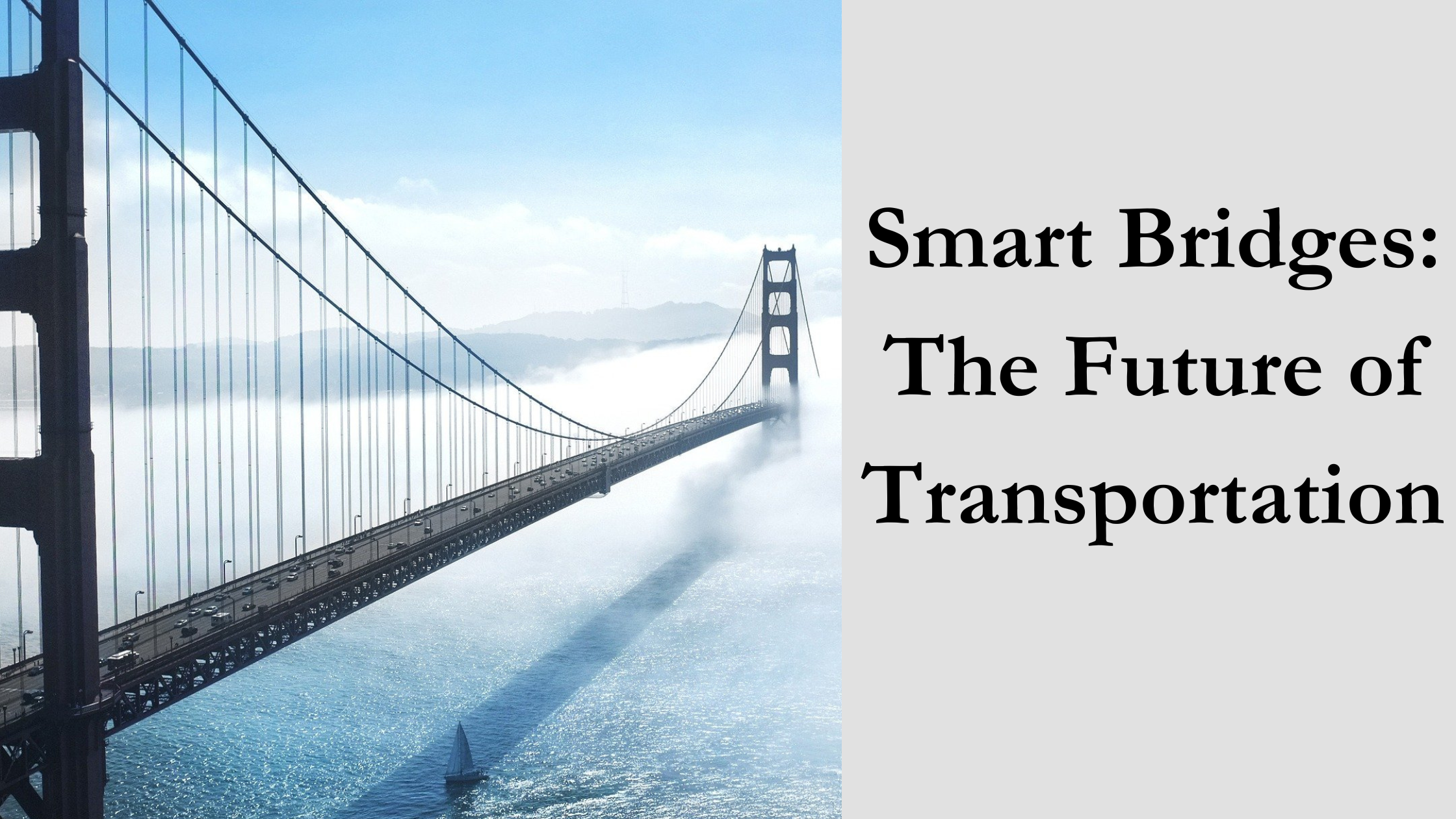Future of Smart bridges will be much more than just conduits for transporting people and things, thanks to technology like BIM.

There are several famous bridges in the globe, including the Rialto, Golden Gate, Brooklyn, (London) Tower, Pont du Gard, Chengyang, and Millau Viaduct. But have you ever heard of a bridge that features an interactive art exhibit, a café, picnic areas, waterfalls, and a performing amphitheater?
It isn’t a fantasy. Future bridge designs may be seen in the winning proposal (by OMA + OLIN) for the 11th Street Bridge Park in Washington, DC, which is scheduled to open in 2025. Today’s bridges can be magnificent and famous, but in the future, bridges will serve more purposes than merely as decorative elements and ways for traffic to traverse barriers.

This is the case with the 11th Street Bridge Park, a pedestrian-only area that intends to unite the Capitol Hill neighborhood with settlements east of the Anacostia River. The project’s objective, driven by project director Scott Kratz, is to reimagine a bridge that would foster creativity and human connection in addition to facilitating pedestrian traffic.
The Bridge Park, according to Kratz, “can become a useful example of how the public and private sectors can invest in and create world-class public space in an equitable manner by following a community-driven and vetted process.”
The Tianjin Eye in China, which has a huge Ferris wheel, predates the 11th Street Bridge as the first multifunctional bridge in the world, but it is setting the way for future, more inventive designs that can better bring communities together.

Bridges Serve More Purposes Than Just To Connect
It’s important to look at how far bridges have come in order to have a better idea of what they will eventually become. A fine example of a famous bridge that is also one of the greatest technical achievements in a century of valiant civil engineering is the Brooklyn Bridge, which was finished in 1883. This predecessor of the Golden Gate Bridge exemplified what civil engineering might entail in the future.
It was the world’s longest suspension bridge at the time. With the exception of the thin Trinity Church spire, its piers were higher than every structure in New York City. And it made use of braided steel wires, a cutting-edge technology at the time. The Brooklyn Bridge and other innovative civil works built in the nineteenth century linked the nation and helped create the groundwork for US economic triumphs in the twentieth. It physically brought people together, which altered people’s perceptions of what a bridge is and what it can do.
Recently, a lot has been published about bridges, generally negative news concerning the vast majority of them that are in need of repair or otherwise functionally and even structurally unsound. An instant ripple effect results from any interruption to the transportation networks, which are a crucial part of the infrastructural systems that support civilization.

Bridges in particular, as well as other transportation infrastructure, are crucial in times of disaster. They permit transportation of goods, such as food and water, and make it easier for search-and-rescue and medical teams to transport the injured to hospitals. They also make it possible to repair and restore vital services, such as power and water. Transportation networks must be kept running or repaired as quickly as feasible during a natural disaster like an earthquake.
Building Intelligent Bridges To Address Current Issues
A region’s short- and long-term economy can be negatively impacted by earthquake damage to highway components, including bridges, roadways, tunnels, and retaining walls. This damage can also make it more difficult to respond to emergencies after an earthquake and to recover. A clear public safety goal was formerly pursued through seismic retrofit, although technical solutions were frequently constrained by political and economic factors.
However, civil engineers may lessen the consequences of upcoming infrastructure difficulties, such as seismic occurrences, by developing Performance-Based Earthquake Engineering (PBEE) and using proper visualization, simulation, and analytic techniques.
This is where building information modeling (BIM) might be useful in producing even more amazing technical marvels. A bridge that is broken or demolished in favor of a new, larger bridge built in a different place, which would alter traffic patterns and isolate towns, can have serious effects on an area. But what if bridges were the start of new relationships, businesses, and ways of flourishing instead of simply being bridges?

Better, Smarter Bridges With BIM
BIM paves the way for the advancement of civil engineering and engineers, and it makes it possible to build more intricate bridges. Engineers and designers may more effectively plan, build, construct, and manage infrastructure systems by employing extremely detailed 3D structural models.
They may shorten design timetables by up to 40% and construction schedules by 30% by avoiding manual design and documentation rework with BIM. Additionally, a 20% decrease in manufacturing time may be achieved by using design models for digital fabrication. The tens of thousands of outdated bridges throughout the world might thus be renovated and upgraded to become considerably more in their subsequent lives.
According to Timothy Armbrecht, P.E., S.E., a structural engineer with the Illinois Department of Transportation and a member of the American Association of Highway Transportation Officials Subcommittee on Bridges and Structural Safety, “BIM can be all the difference because the model is in context with the background and surroundings, and it allows for quick and easy modifications that [clients and the public] can see and understand—possibly even while a public meeting is still going on.”

Bridges are evolving, whether it’s the Tilikum Crossing, the 11th Street Bridge Park (which will be built on the piers of the previous bridge), or the “Bridge of the People” in Portland, Oregon (which is also off-limits to automobiles).
The ability to identify, diagnose, and even foresee issues that city infrastructures could face in the future by modeling things like seismic occurrences and their effects will be crucial in the future. Once future design requirements are established, adopting BIM will assist in developing design options for bridges and smart roads that take those factors into account and assist in determining the most cost- and time-effective building method.
Built 139 years ago, the Brooklyn Bridge was ground-breaking in its day and is still stunning today. But in the future, a bridge won’t simply be a bridge; it will shift the expectations for what civil engineering will be in the future and what civil engineers will become.



